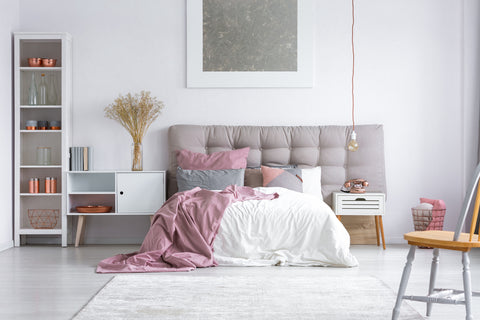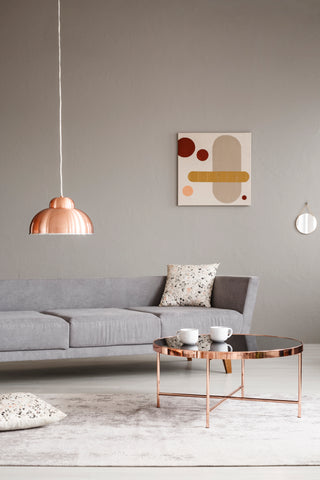0800 55 7373
0800 55 7373

Where does the name Viscose come from?
In 1894, English chemist Charles Fredrick Cross patented his artificial silk as "Viscose". He names the material "Viscose" because its production involved the use of a highly sticky viscous solution. The first commercial viscose was produced by the British company Courtaulds Fibres in 1905.
Courtaulds formed an American division to produce their formulation in the United States in 1910. In the USA the name "Rayon" was adopted in 1924. In Europe though, the yarn itself remained known as "Viscose", which has been ruled an acceptable term for Rayon by the U.S. Federal Trade Commission (FTC).
Does Viscose have other names?
Common other names are Rayon, Faux Silk, Artificial Silk, or Art Silk. Bamboo Silk is a kind of viscose as both are made from the phloem part of the tree. The only difference is that viscose is made from wood cellulose while bamboo silk was made from bamboo tree cellulose.
Is Viscose a natural or synthetic fibre?
Viscose falls somewhere in between. Viscose is the oldest man-made fibre. The raw material for Viscose is natural cellulose (wood pulp). The Viscose process consists of breaking down natural cellulose and reforming it into fibres. Because Viscose is made from cellulosic materials it behaves like cotton and bamboo.

Is Viscose a good alternative to silk?
The silky, cool, breathable Viscose fibre is a natural replacement for real silk because of its affordability and performance. Viscose has very similar properties to silk. It is also shiny and soft.
Actually, silk is the fibre that silkworms spin to make cocoons and the only way to obtain the silk is to boil or gas the worms alive inside their cocoons. As you can imagine, many silkworms are needed and it may take roughly 3000kg of fresh mulberry leaves to feed enough silkworms to make 1,000,000 cocoons, which is the required amount to produce enough yarn for one small silk rug. This makes Visocse a completely cruelty-free and ethical alternative.
Bamboo silk is also an extremely sustainable alternative to silk as bamboo is the fastest growing plant on the planet, plus, nasty pesticides and chemicals aren't required when harvesting the bamboo. This means the cultivation is natural, and never harms the environment.
What are the characteristics of Viscose rugs?
Viscose rugs are soft, smooth, cool, comfortable and highly absorbent. Viscose is a versatile fibre and is widely claimed to have the same comfort properties as other natural fibres. Viscose can imitate the texture of silk, wool, cotton and linen.
Viscose yarns are valued for their rich brilliant colours. The colours look more sophisticated and are close to the natural way of dying.
My new Visocse rug sheds, is this normal?
Many newly manufactured Viscose rugs tend to lose fibres during the first weeks on the floor. This effect called shedding or fluffing is caused by the way the yarn is spun. It is no reason for alarm, but a natural phenomenon inherent to Viscose yarn. This shedding will eventually stop.
Just vacuum the carpet a little more gently for the first few weeks, make sure the brush mechanism is up and empty the dust bag regularly. Wiping the surface with a lukewarm damp cloth helps to eliminate some fibre dust. Never overwet your viscose rug though! Viscose fibres break easily when wet and must be dried quickly, remember this fibre contains a natural ingredient: cellulose. Viscose can shrink when water-soaked. Using large amounts of water is not a way to clean this type of rug. Professional dry-cleaning is recommended.
If your viscose rug gets wet, you should put the pile in the right direction in order to keep the right direction after drying. If the pile feels nice and smooth, then it is in the direction of the pile. If the pile feels rougher and the pile rises a little, then it is against the pile direction.

How should I maintain my Viscose rug?
Regular and thorough vacuum cleaning in the pile direction is recommended. If your vacuum cleaner has high power, be sure to switch it to low power and do not use the beater bars. You need to pass the vacuum cleaner slowly over the rug to pick up all the dust and dirt.
If you have a rug with fringes, be careful around the fringes, since they tend to get stuck in vacuums. To maintain a long lifespan of the fringe, try not to roll the vacuum over it.
How can I remove stains or drink spillage?
Professional dry-cleaning is highly advised since Viscose is a very absorbent fibre. If you want to try to remove stains at your own risk, we can give you the following advice:
Viscose rugs can become stiff and matted after the cleaning, a very small amount of fabric softener (diluted and mixed thoroughly in a sprayer) over the damp fibres prior to the final drying phase can help to soften the fibres.

What about "Chenille"?
According to textile historians, chenille-type yarn is a recent invention, dating back to the 18th century and believed to have originated in France. Chenille is a velvety material that can be made out of cotton, wool, silk, viscose, acrylic or polyester through a twisting process.
The Chenille yarn is manufactured by placing short lengths of yarn, called the "pile", between two "core yarns" and then twisting the yarn together. The edges of these piles then stand at right angles to the yarn's core, giving chenille both its super softness and its characteristic look. Chenille will look different in one direction compared to another as the fibres catch the light differently.
How come Viscose rugs are so shiny?
Viscose rugs are aesthetically stunning with a shimmering effect and an ultra-soft silky texture. The brilliant colour retention property of Viscose helps in retaining the bright and fresh look of rugs even after multiple years.
The unique cross-section of Viscose fibres enables a better reflection of incident light, thereby increasing its lustre.
Viscose rugs, so natural!
Natural, ecological, gene - call it what you want; it's simply a guilt-free luxury. Viscose rugs resonate with the back-to-nature movement.
Viscose helps in our quest for a sustainable world. Besides coming from nature, it also returns to nature after use, thereby conserving our planet. Viscose biodegrades completely in just 8 weeks - faster than wool (52 weeks) and cotton (15 weeks) - thereby providing a natural solution to the increasingly challenging problem of textile waste.